Learn About Mosquito Biology, Life Cycle and Habitats
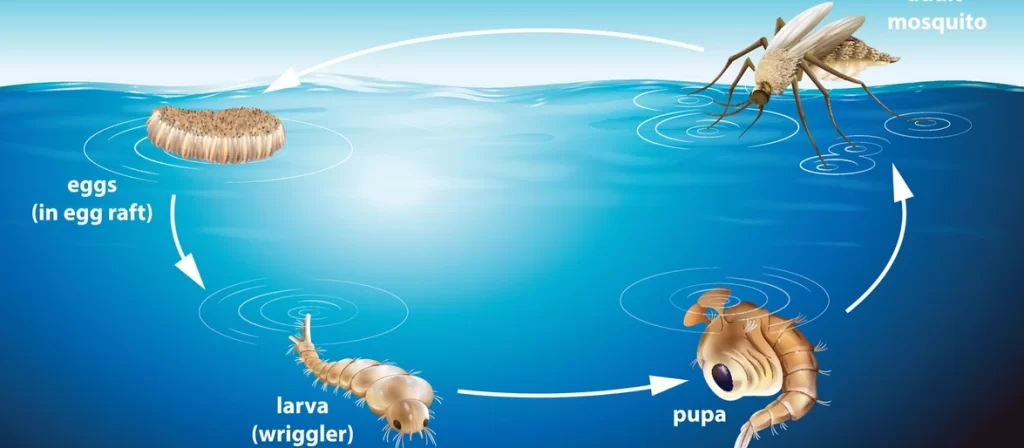
The 4 stages in the life cycle of the mosquito are Eggs, Larvae, Pupae, and Adults.
STAGE 1: MOSQUITO EGG STAGE
The Anopheles Mosquito lays eggs directly on the water. Eggs are laid singly and float to keep them from sinking. Anopheles eggs hatch within 2 to 3 Days. These eggs are susceptible to drying.
Culex Mosquitoes lay eggs in groups directly on the water. Culex eggs are glued together as floating rafts. Each raft can contain up to 300 eggs and are 1/4 inch long and 1/8 inch wide. Culex eggs hatch in 1 to 2 days and are susceptible to drying as well.
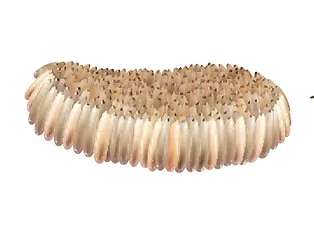
Aedes Mosquito eggs are laid typically on dry soil or on the sides of containers where they will be flooded later. The Aedes eggs will hatch when flooded with water and unlike the Anopheles and Culex, resistant to drying out.
Examples of Flooding to Hatch Aedes Mosquitoes Include:· Saltwater high tides
· Irrigated pastures
· Tree holes/containers flooded by rains
· Flooded stream bottoms
Aedes eggs are extremely resilient and resistant to drying out, some can survive for up to 5 years before being flooded and hatching.
STAGE 2: MOSQUITO LARVAL STAGE
Larvae Anatomy
The mosquito in its larval stage contains 3 body regions; The Head, Thorax, and Abdomen.
The head with mouthparts filter food from the water. Some larvicides are particles that are filtered and eaten. The thorax is located just below the head and is slightly broader.
The abdomen with a siphon or breathing holes on the 8th segment of the abdomen
– Culex and Aedes have siphon used to breath
– Anopheles with a pair of breathing holes
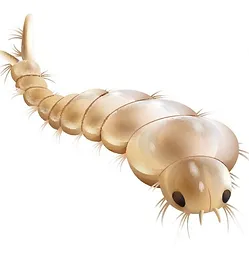
Larval Growth
Mosquito larvae grow by molting. There are 4 stages of molting called instars. The 4th stage is the largest stage is reached in 4 days up to several weeks.
The Larvae feed with Brushes and Filters that sweep in particles in water. Filter feeders capture small microorganisms and floating organic matter.
The larvae graze on algae and slime and can ingest particles of some larvicides.
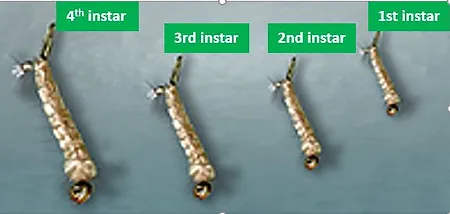
STAGE 3: MOSQUITO PUPA
The pupal stage is mobile and unlike most insects transforms from aquatic larva to terrestrial adult called “tumblers”. They breathe through respiratory “horns” and do not feed. The pupation stage takes 2 to 3 days to complete.
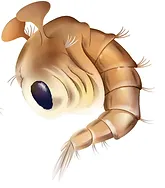
STAGE 4: ADULT MOSQUITO
The adult mosquito anatomy contains the Head,
Thorax, and Abdomen. The Head is comprised of Proboscis, Antennae, and Palps. The thorax contains the Legs and Wings with scales and the Abdomen is for digestions and reproduction.
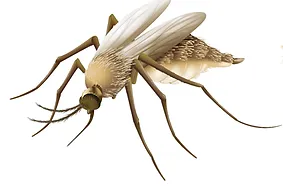
The Movement of the Adult Mosquito
The movement of the adult mosquito and their abilities to fly long distances vary greatly. Most mosquitoes fly 1-5 miles and Salt marsh mosquitoes can fly distances greater than 20 miles.
The Aedes aegypti / Ae. albopictus mosquitoes fly only a few hundred feet. These are the mosquitoes most commonly found in your yard.
Mosquitoes Move to Find:
· Nectar & sugar for energy
· Host for a blood meal
· Blown by wind & rain
· Sites for egg-laying
Water, Food Source, and Protection from Wind is Needed for Mosquito Development
Female mosquitoes lay eggs in suitable conditions for larval survival on or near water. The water should be stationary or very slow-moving water for the female to successfully lay eggs and ensure their development into adulthood. There also needs to be a suitable food source for larvae of microbial growth or organic matter. The eggs also need to be protected from wind and waves.
Types of Water for Mosquito Development
Saltwater or brackish Mosquito Breeding Environments
· Mangrove swamps
· Salt marshes
· Salt or brackish ditches
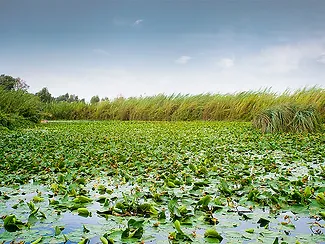
Fresh Water Mosquito Breeding Environments
- Freshwater marshes
- Lakes
- Ponds and seepage areas
- Springs
- Swamps
- Borrow pits and canals
- Rain and floodwater pools
- Tree holes
- Drainage ditches
- Plants (bromeliads and pitcher plants)
- Artificial containers
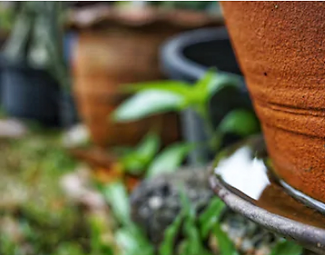
AEDES & CULEX MOSQUITO HABITATS & DEVELOPMENT
Aedes aegypti and Ae. Albopictus Mosquitoes
Aedes aegypti (yellow fever mosquito) and Ae. albopictus (Asian tiger mosquito) are two types of container breeding mosquitoes. Typical breeding areas include in Artificial Containers, Tree holes, and Bromeliads and pitcher plants, buckets, tires, and other areas capable of retaining stagnant water.
Aedes aegypti and Ae. albopictus are found around urban residences and businesses and fly short distances, less than a 1/4 mile from larval sources.
Aedes aegypti and Ae. albopictus are capable of transmitting Zika Virus, Dengue Virus, and Chikungunya Virus.
Culex quinquefasciatus (Southern house mosquito)
The Culex mosquito breeds in stagnant, nutrient-rich water such as artificial containers, freshwater drainage ditches, Borrow pits and canals, Ponds and seepage, gutters, and other temporary nonmoving water sources.
Culex mosquitoes are found around urban areas and livestock facilities and fly 1-5 miles from larval sources. Culex mosquitoes are capable of transmitting West Nile Virus, Encephalitis (EEE, SLE, and others).
Saltmarsh Mosquitoes
Aedes taeniorhynchus (black salt marsh mosquito) and Ae. sollicitans (eastern saltmarsh mosquito) reside in Mangrove swamps. Salt marshes. And Salt or brackish ditches.
Unlike the Aedes aegypti, Ae. Albopictus and Culex, the Saltmarsh Mosquitoes move long distances for their blood meals. Saltmarsh Mosquitoes can fly over 20 miles from their larval sources. These mosquitoes are mostly nuisance mosquitoes.
Understanding the Mosquito Life Cycle and Habitat is Critical for Mosquito Control
Understanding where mosquitoes breed is the first step to prevention. By interrupting the mosquito life cycle, you can control the spread in your yard.
One of the best ways to control mosquitoes in your yard is with the INZECTO Mosquito Traps and INZECTO Mosquito Chips. They are perfectly designed to control the adult population as well as prevent larvae from developing into adult mosquitoes. Learn more about we are revolutionizing the way you control mosquitoes in your yard HERE.
